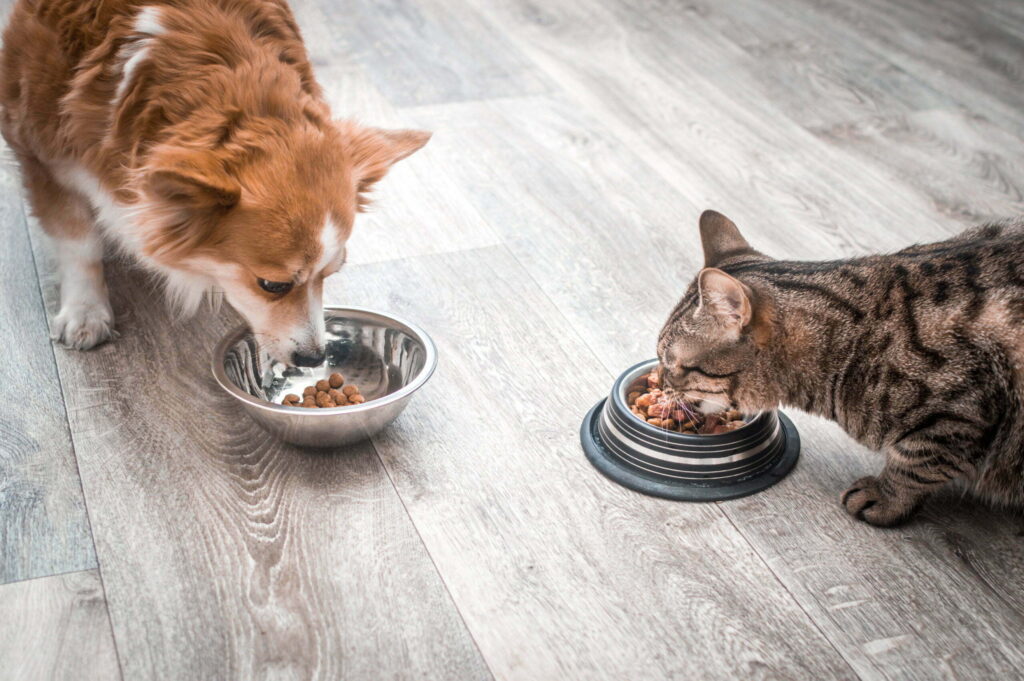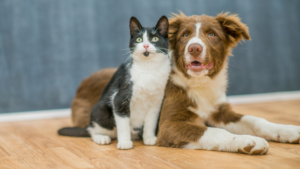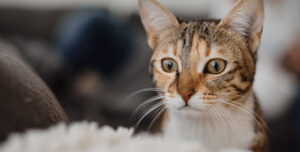Turning down that cute furry face when your pet is asking for treats can be difficult, but the reality is that an unhealthy diet can lead to obesity and damage your pet’s life over time. Obesity is a serious condition that impacts millions of pets worldwide. The extra pounds that your pet may be packing can lead to a variety of other health risks, but being able to spot the signs of obesity early on and understanding how pet nutrition can play a vital role are key factors in ensuring your pet lives a long and healthy life.
Health Risks Associated With Pet Obesity
There are a variety of health risks that can occur due to pet obesity including:
- Breathing difficulty: Obesity can be linked to breathing difficulty due to the fat deposits that restrict airflow around the chest and airways.
- Joint pressure: Carrying heavier weight can lead to joint stress, arthritis, difficulty walking, and more.
- Diabetes: Obese pets run a high likelihood of developing diabetes, a condition that develops when the body is unable to use glucose (a type of sugar) properly. Early signs of diabetes include increased urination, excessive thirst, increased appetite, unusual weight loss, cloudy eyes and more.
- Fatigue and inability to exercise: Carrying all that excess weight around can cause your pet to become more tired and fatigued than usual. Obese pets have a harder time exercising and tend to get tired much quicker than pets with a normal weight.
- High blood pressure: The heart needs to work much harder to get the right amount of blood throughout the body. In obese pets, this means that there are more areas of the body that need blood which causes the heart to work in overdrive and can lead to high blood pressure and other heart-related issues.
- Lower immunity: Obesity can result in more viral and bacterial infections due to the body working less efficiently.
- Higher risk of cancer and other tumors: One of the most devastating consequences of obesity is the increased likelihood that your pet develops cancer or other tumors. There are no cures for cancer and malignant tumors may require surgery to eliminate.
Signs of Obesity
As responsible pet owners, it’s important to know the signs of obesity so we can begin making changes to our pet’s lifestyle early on. There are ways to check if your pet is obese. Try looking from above and see if your pet has a defined waist and a straight build for dogs, or a figure-8 shape for cats. The belly is another visual clue – tucked in bellies are healthy, whereas bellies that come down and sway are not. Additionally, you won’t be able to feel their ribs very easily when petting them.
You can also look at the general behavior of your pet and observe for signs of obesity. Overweight pets tend to spend a lot more time inactive and lounging around and when you do take them out for exercise, they can get tired very quickly and may even have breathing problems. An animal vet will also be able to immediately tell if your pet is obese by looking at them and weighing them.
How Nutrition Can Help
One of the most effective and critical ways to combat obesity in pets is to adjust their nutrition. You can substitute higher calorie commercial treats with nutritious low-calorie pet treats. Although weight loss is a simple formula where the calories burned needs to be more than the calories ingested, the reality is that cutting your pet’s calories without guidance from your vet is never a good idea. Pets need a certain percentage of protein, carbs, and fats to stay healthy and have the energy they need to function throughout the day. Always get guidance from your vet regarding your pet’s daily nutrition needs. When introducing a new diet to your pet, allow for a 1-2 week transition period to get your pet acclimated to the new diet. A solid nutrition plan that covers your pet’s daily needs combined with daily exercise is a great combination to get your pet’s weight under control.



